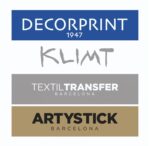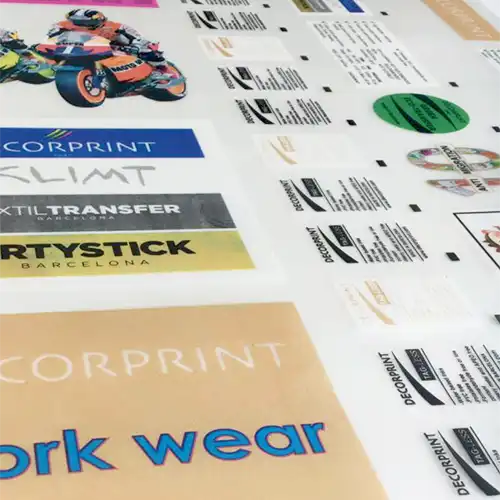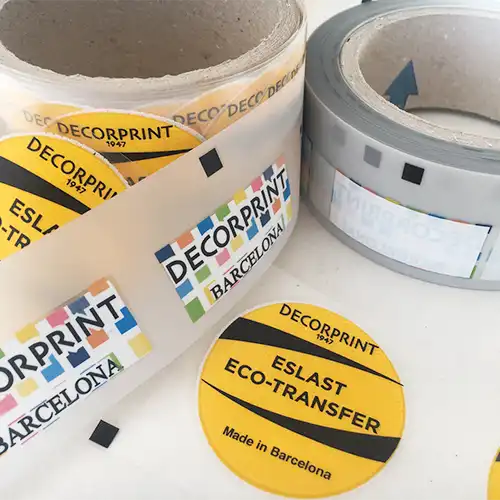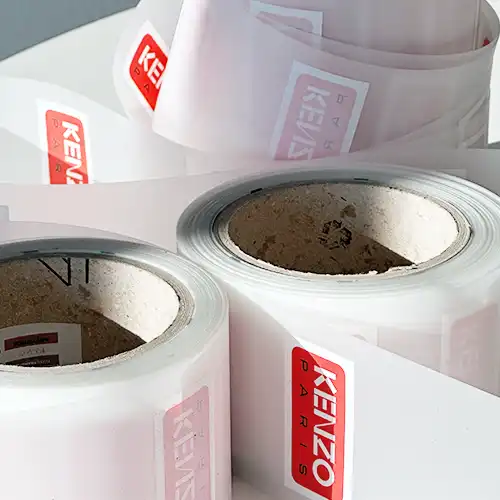HEAT TRANSFERS
HEAT AUTOMATED TRANSFER
HEAT AUTOMATED TRANSFER
HEAT TRANSFERS IN ROLL
For more productive, efficient, and continuous printing.
Designed for automated processes, our heat transfer systems optimize production times without compromising final quality.
Thanks to our experience in screen–printed transfers, we combine screen print quality with the productivity of continuous roll format, meeting the industry’s highest standards.
FAQS
WHAT ARE THE CHARACTERISTICS OF OUR H.A.T. (HEAT AUTOMATED TRANSFER) HEAT TRANSFERS?
- High-definition transfers.
- Resistance to scratching and wear.
- Flexibility: these are textile transfers with high stretchability without damaging the transfer.
- Elastic: provides comfort to the garment.
- Durable: can be washed at 60°C without affecting the colour
- Eco-friendly: the polyester film is recyclable and the inks comply with OEKO-TEX 100 standards.
- With a matte finish: to prevent glare and make the transfer look sharper.
- It can be applied to polyester, cotton, and blends: the transfer can be applied to any type of fabric that can withstand the specific temperature. It is recommended to carry out fastness tests before starting any mass printing.
- Transfers for any garment: T-shirts, caps, waistcoats, shoes, etc. Take care with seams, zips and buttons that may affect the integrity of the heat press.
- Very easy to apply: thanks to the transparent conveyor.
- Hot peeling: for instant transfer peeling.
WHAT ARE THE ADVANTAGES OF USING H.A.T. (HEAT AUTOMATED TRANSFER) HEAT TRANSFERS?
- High stretch and recovery: the heat transfer returns to its original shape after being stretched without being affected.
- Dry cleaning
- No glue stains: for a better visual effect of the transfer
- For any light or dark fabric: the colour intensity in the transfer is the same.
- Unlimited number of colours
- With transparent conveyor: for error-free placement of the heat transfer.
- Hot peeling: enables faster mass production
HOW TO APPLY OUR H.A.T. (HEAT AUTOMATED TRANSFER) HEAT TRANSFER?
To apply heat transfers, follow these steps:
- Ensure that the garment is clean and smooth. Avoid seams, zips, buttons and folds that could affect the adhesion of the heat transfer or the integrity of the heat presses.
- Turn on the textile heat press: Set the press to 140-160 ºC-12”-3/4 bars. Play around with these variables to achieve better heat transfer printing.
- Preheat the garment for 5″: to remove moisture and ensure better adhesion of the transfer.
- Positioning the heat transfer on the garment: improved positioning of the heat transfer with HAT, thanks to its transparent conveyor belt.
- Press for between 4 and 12 seconds.
- Peel off the transfer: remove the transparent carrier immediately while the transfer is still hot.
NOTE: recommendations for printing heat transfers:
Perform resistance and washing tests before starting mass production.
Use a Teflon protector or similar.
For a permanent seal, place the transfer carrier sheet on top of it and press for 5 seconds (make sure the transfer is well adhered).
WHAT IS AN ANTI-MIGRANT?
Some textiles, such as Soft-shell or Dri-Fit, especially when they are red, are susceptible to sublimation. This means that the colour of these fabrics transfers onto the textile transfer ink, staining it and producing what is known as ‘bleeding’.
Our textile transfers with the PATENTED SOFT-TOUCH FORMULA are extremely effective at blocking dye migration in pigmented or sublimated fabrics, even when their pigments are reactivated during the application of the textile transfer or during washing (in any context where the garment is subjected to high temperatures).





